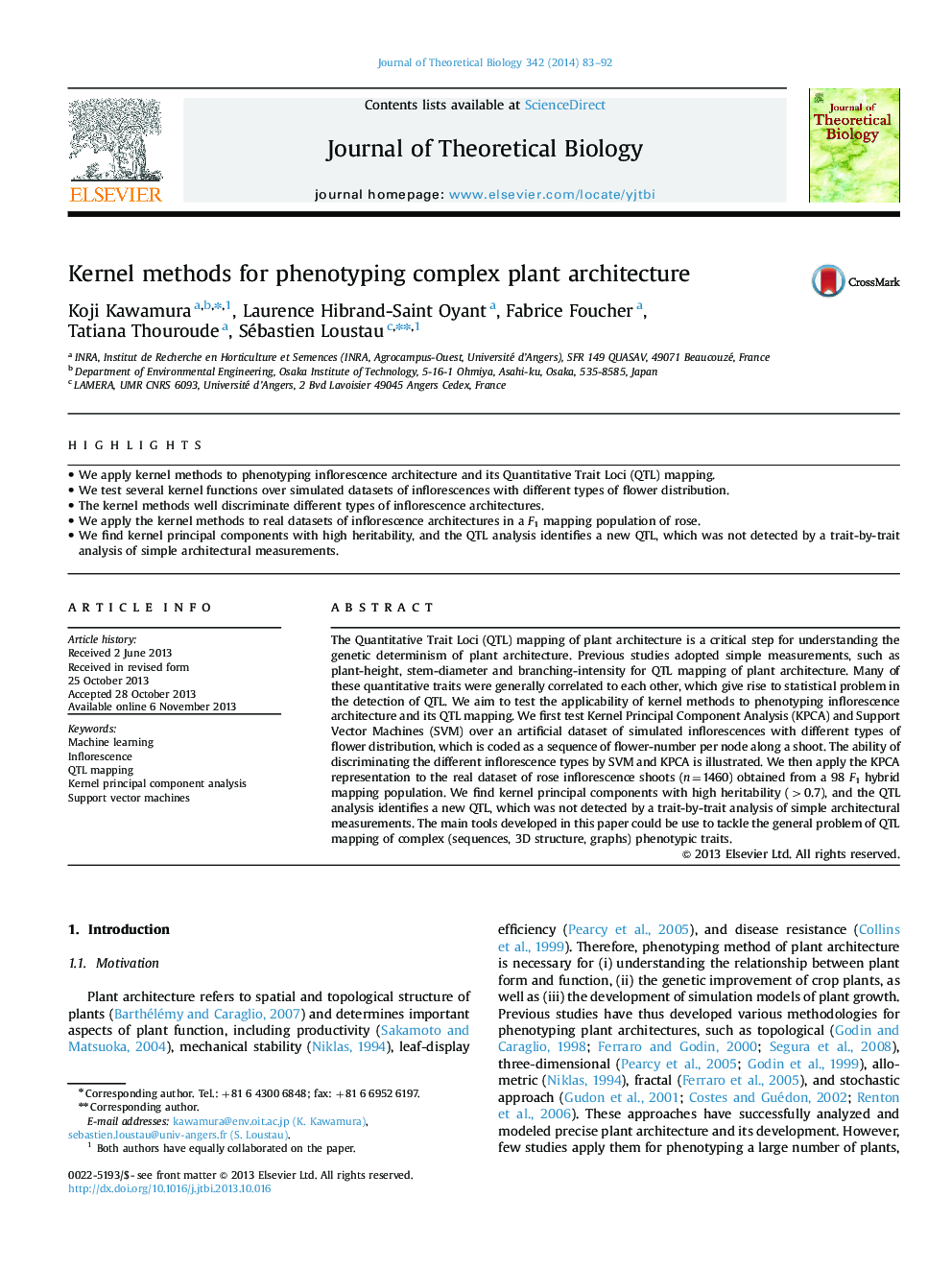| Article ID | Journal | Published Year | Pages | File Type |
|---|---|---|---|---|
| 4496215 | Journal of Theoretical Biology | 2014 | 10 Pages |
•We apply kernel methods to phenotyping inflorescence architecture and its Quantitative Trait Loci (QTL) mapping.•We test several kernel functions over simulated datasets of inflorescences with different types of flower distribution.•The kernel methods well discriminate different types of inflorescence architectures.•We apply the kernel methods to real datasets of inflorescence architectures in a F1 mapping population of rose.•We find kernel principal components with high heritability, and the QTL analysis identifies a new QTL, which was not detected by a trait-by-trait analysis of simple architectural measurements.
The Quantitative Trait Loci (QTL) mapping of plant architecture is a critical step for understanding the genetic determinism of plant architecture. Previous studies adopted simple measurements, such as plant-height, stem-diameter and branching-intensity for QTL mapping of plant architecture. Many of these quantitative traits were generally correlated to each other, which give rise to statistical problem in the detection of QTL. We aim to test the applicability of kernel methods to phenotyping inflorescence architecture and its QTL mapping. We first test Kernel Principal Component Analysis (KPCA) and Support Vector Machines (SVM) over an artificial dataset of simulated inflorescences with different types of flower distribution, which is coded as a sequence of flower-number per node along a shoot. The ability of discriminating the different inflorescence types by SVM and KPCA is illustrated. We then apply the KPCA representation to the real dataset of rose inflorescence shoots (n=1460) obtained from a 98 F1 hybrid mapping population. We find kernel principal components with high heritability (>0.7), and the QTL analysis identifies a new QTL, which was not detected by a trait-by-trait analysis of simple architectural measurements. The main tools developed in this paper could be use to tackle the general problem of QTL mapping of complex (sequences, 3D structure, graphs) phenotypic traits.
